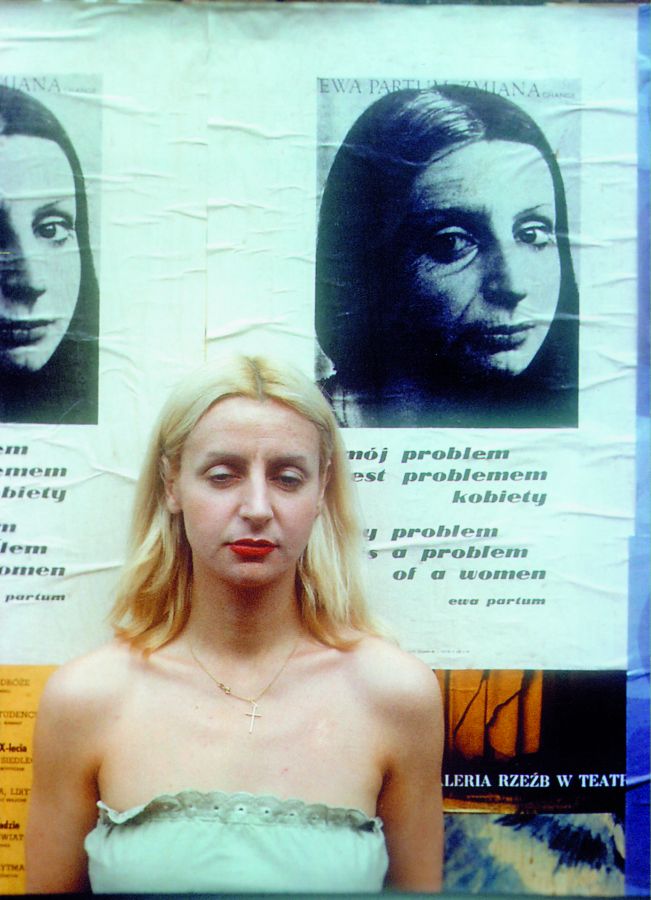Back in the People's Republic of Poland, nudity in art stood for something very different from what it does in contemporary Poland. The fact of getting rid of the protective layer of clothing alone was perceived as a critical gesture, through its opposition to the norms of the system and of the parochial society. The Eastern Bloc countries were governed by moral conservatism, which in Poland took a pious form. Censors were as keen on banning politically dubious texts and works as those that went against the cultural norms, however, the naked female body was more acceptable than male nudity (a standard proven by, for example, the popularity of the Polish Venus/Wenus polska exhibitions).
Partum's act of undressing was thus undeniably a sign of resistance – among others, against the society which encouraged discrimination of women, who were celebrated only on special occasions (such as Women's Day). The artist's statement at the opening showed that she treated nudity as an act of (self-)humiliation. By imposing it on herself, she pointed to the position assigned to women in a phallocentric world. When exposing her body, she also exposed the bare truth about the situation of female artists and women in general. But most of all, she wanted to be provocative.
At the time, Ewa Partum was one of the few Polish artists who openly manifested their feminist views and included them in their art.
During that time, the members of the close-knit avant-garde environment in Poland were convinced that art was free and didn't not work towards any ends; that even showcasing a certain issue attached a function to it and could potentially undermine it.
– she recalled.
The artist wanted, then, to introduce usefulness and gravity to her work. At the same time, she wanted to change the way of thinking about art that welcomed such properties. She explained on another occasion:
I wanted to institute feminist art as a current in such a way that would encourage women to be involved in it. That is why incorporating something as authentic as the body was essential.
 Ewa Partum in front of the posters My Problem is a Problem of a Woman / Mój problem jest problemem kobiety, Warsaw, 1978, photo courtesy of Zachęta - National Gallery of Art
Ewa Partum in front of the posters My Problem is a Problem of a Woman / Mój problem jest problemem kobiety, Warsaw, 1978, photo courtesy of Zachęta - National Gallery of ArtIn 1980, she carried out a performance in Poznań, titled Women, Marriage is Against You (Kobiety, małżeństwo jest przeciwko wam), for which she put on a wedding dress and cut it up into small pieces, eventually revealing her naked body in front of the audience. Nudity in her works, then, expressed getting away from cultural stereotypes, the imposed behavioural patterns, and social paradigms. One year prior, she subjected her body to the process of characterization, or more precisely – ageing, in a protest against modern cosmetology and plastic surgery (she introduced the same theme in one of her earlier performances from 1974 – My Problem is a Problem of a Woman / Mój problem jest problemem kobiety). In the background, sounds from a tape recorder could be heard, including a text written by her:
A woman lives in a social structure that is strange to her. Its model was created by men and for men. A woman is capable of functioning within a structure she doesn't identify with on the condition that she masters the art of camouflage and discounts her own personality. […] The phenomenon of feminist art opens a new role for women; the possibility of self-fulfilment.